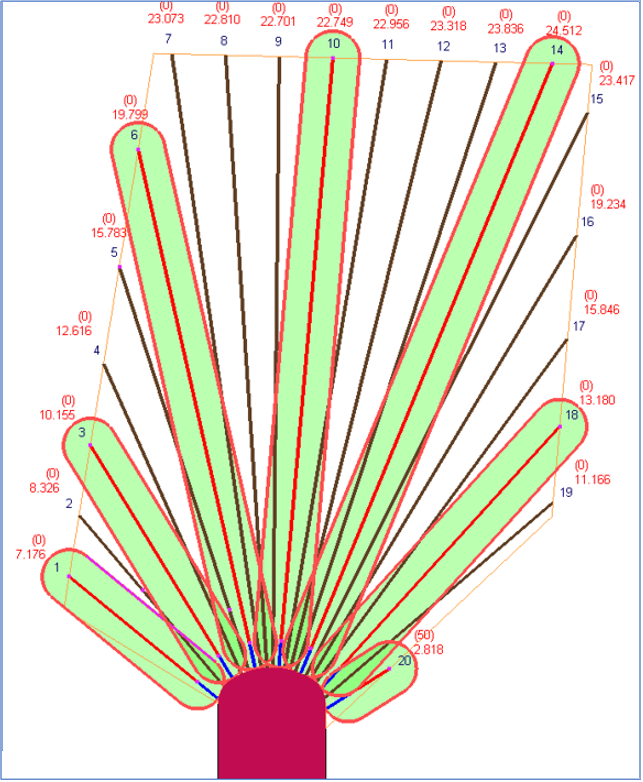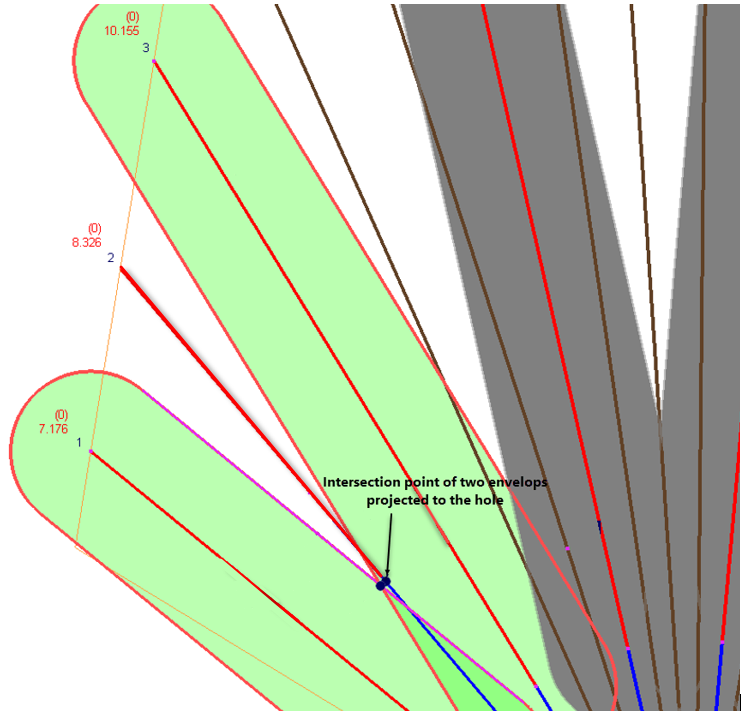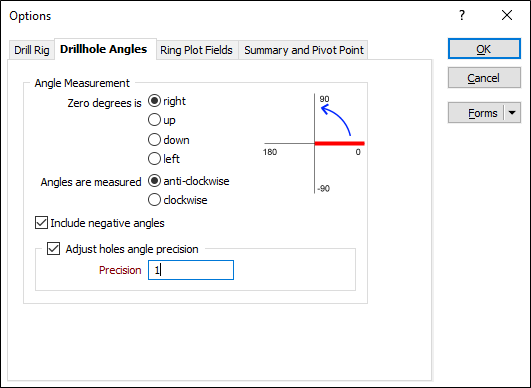Charging Method
The drillholes of a ring can be automatically charged using one of two methods:
- AEL approach
- Influence Radius
AEL approach
This method produces a charge pattern with specific uncharged collar lengths based on the following rules:
S is a Short stemming length (20 x the hole diameter)
M is a Medium stemming length (50 x the hole diameter)
L is a Long stemming length (125 x hole diameter)
Holes are charge in an S M S M S M ... pattern, unless a blast hole has a length that is greater than 1.5 X L
When a blast hole is encountered that has a length that is greater than 1.5 x L:
- An S L M L S L M L ... pattern is used instead, and is used until the next blast hole to be charged is shorter than 1.5 x L.
- The charging pattern then reverts to the original S M S M S M ... pattern.
References: Design Methodology for Underground Ring Blasting by I. Onederra & G. Chitombo, 2013
http://www.tandfonline.com/doi/abs/10.1179/174328607X282244?journalCode=ymnt20
Influential Radius
This method is described with reference to the following figures.
- An artificial charge envelope is created around the initiator hole (Hole No. 1) based on the explosive fracture radius.
- The tool then identifies the next hole in the pattern that does not intersect the envelope of the initiator hole (referred to as an independent hole) and generates an artificial charge envelope around it (Hole No.3).
- This process occurs in a consecutive order until of all the independent holes of the ring are identified. These holes are fully charged once the Minimum stemming length is applied.
- To calculate the charge of a hole that is located between two independent holes (referred to as a dependent hole), for example Hole No.2, the tool finds the intersection point of the charge envelopes of Hole 1 and Hole 3.
- The intersection point is projected perpendicular to Hole No.2 to define the point from which the hole is charged.


If there are multiple dependent holes in between two independent holes then the algorithm will follow the same process. The order in which the holes are processed is based on the Angle Measurement direction set in the Ring Options settings. See:Drillhole Angles
If the initiator hole is not the first or last hole in the fan, then the algorithm will process and charge holes in both directions from the initiator hole, irrespective of the Angle Measurement setting.
